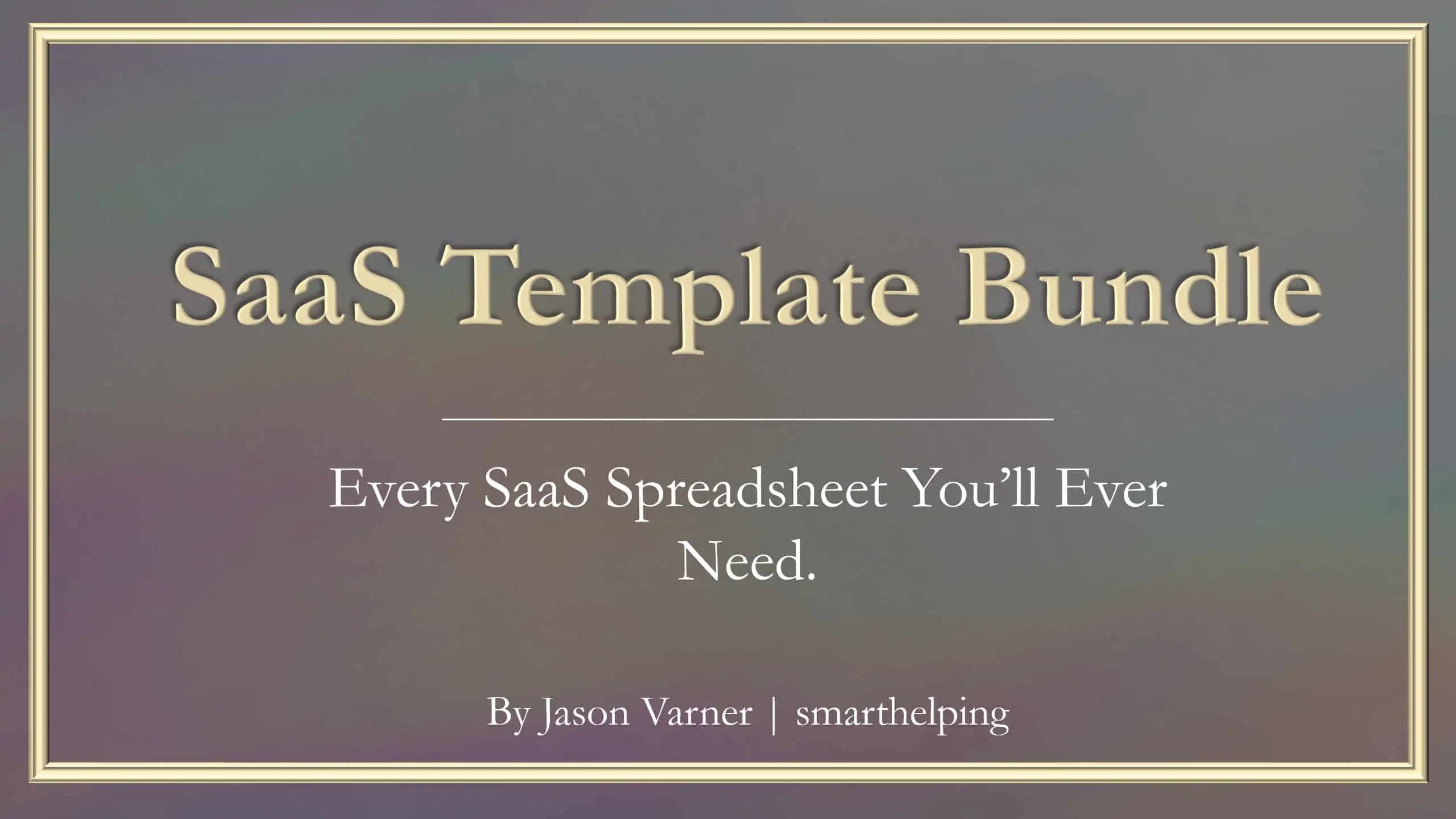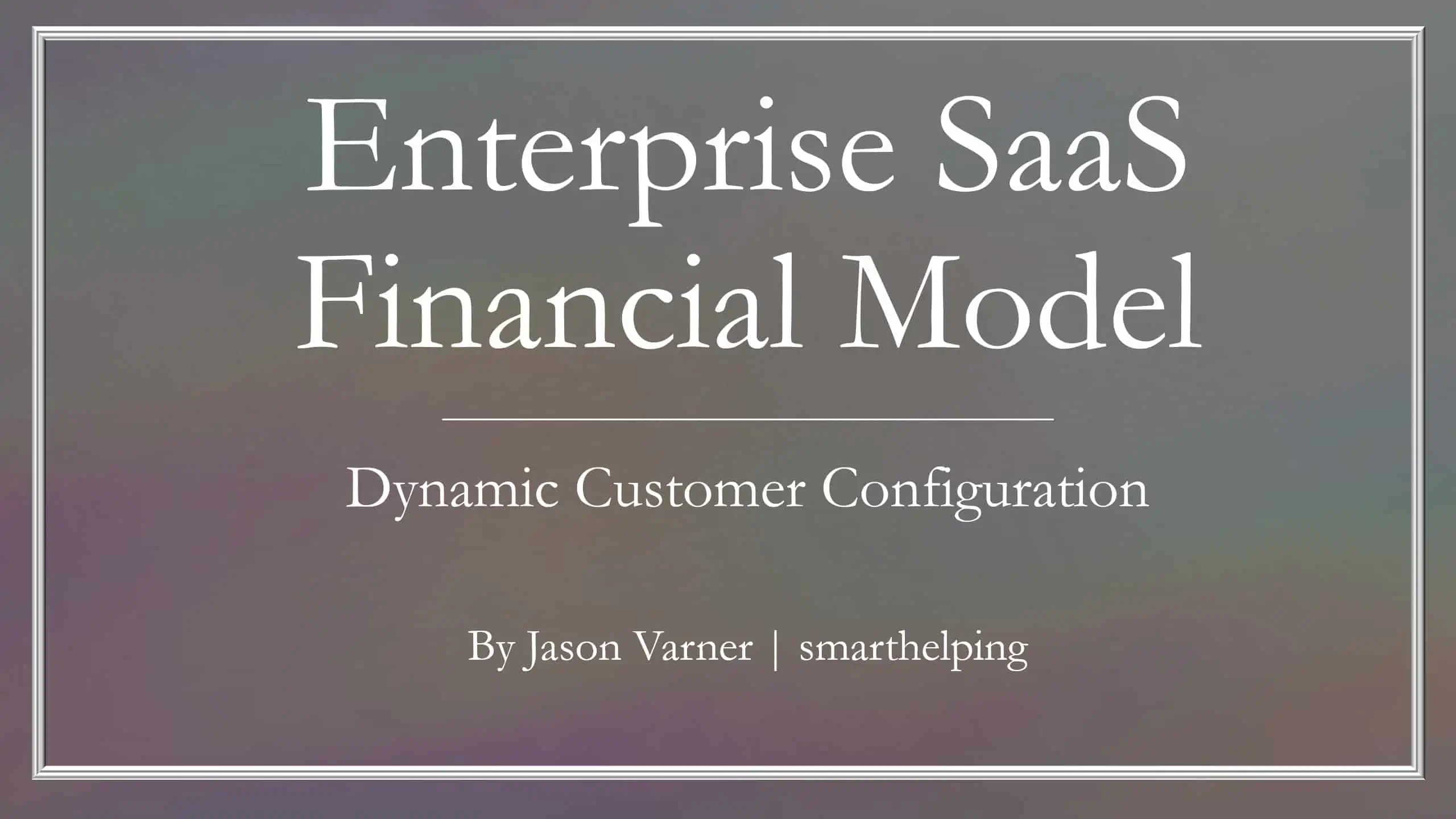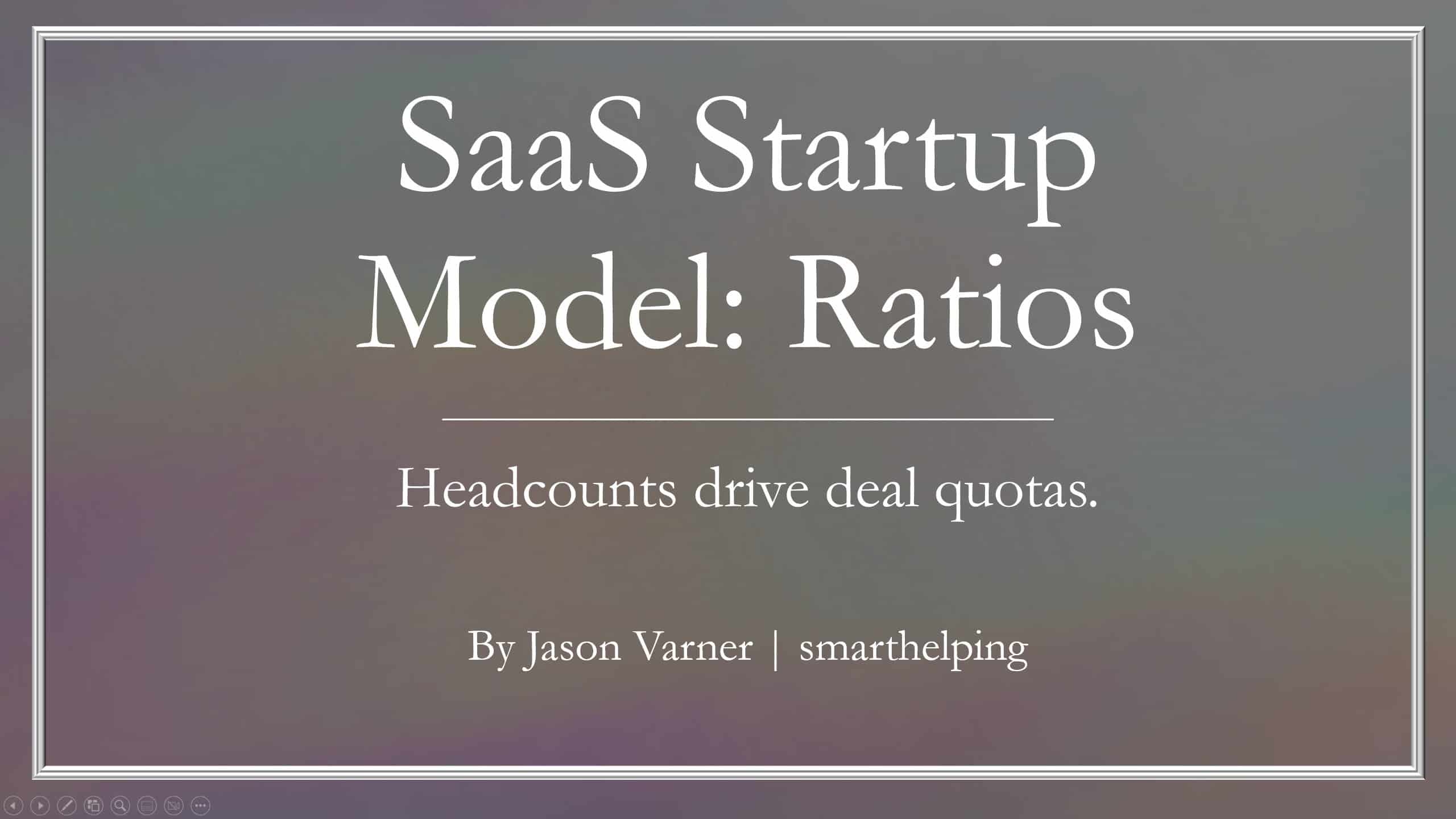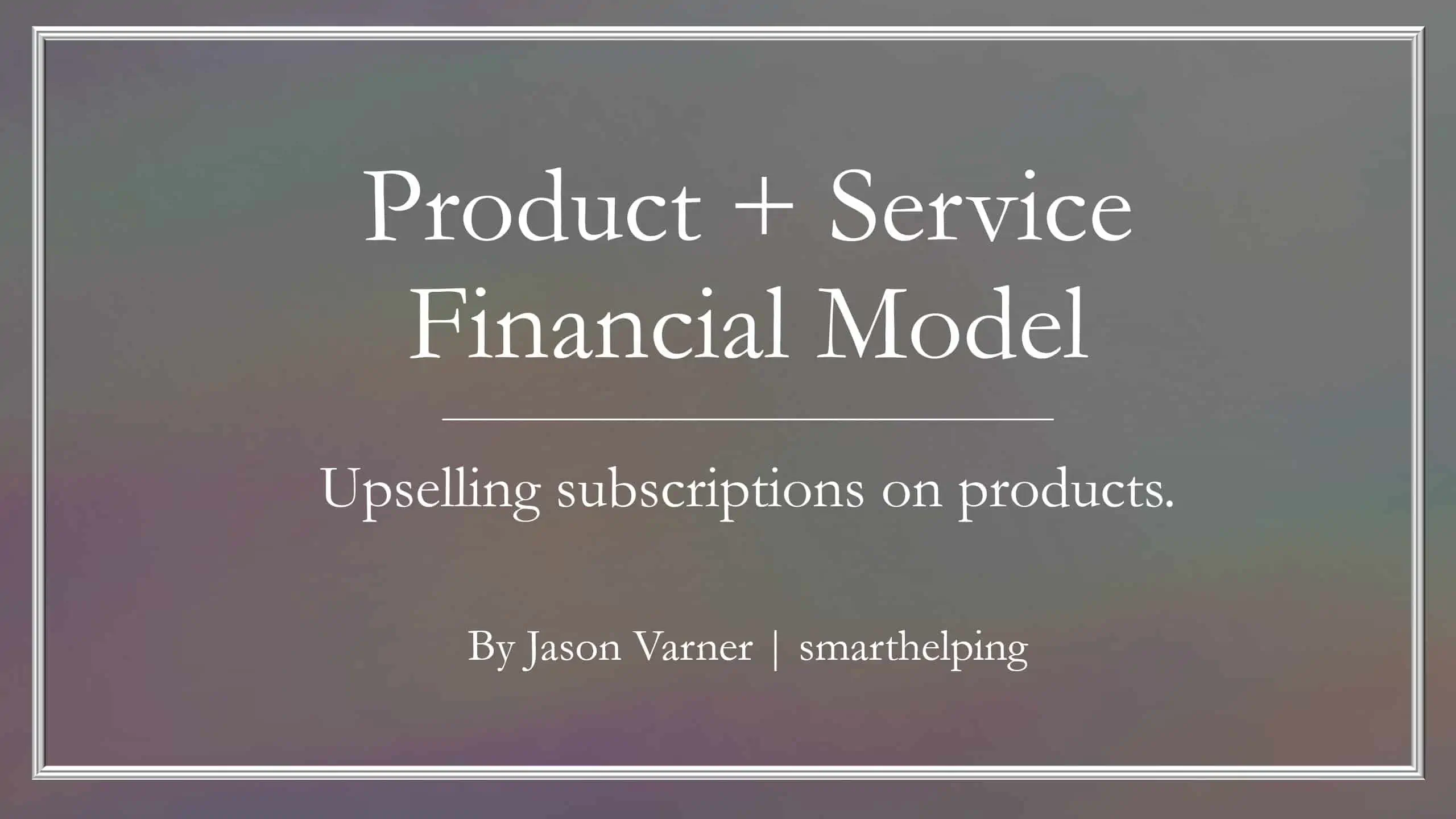Cohort Modeling Framework for SaaS – Historical Data Analysis
A simple framework for any recurring revenue business (SaaS or otherwise) to drop in their historical customer purchase data in order to see spending / retention patterns.

Video Overview:
UPDATE: Since the video, I have added a full dashboard, stats for average customer lifetime value, average spend per month per customer over their tenure, and visualizations for historical churn rate (# / %) as well as historical customer count over time. Enjoy this general framework for cohort analysis of historical data.
All you need is three simple columns of data in order to use this template. They are: Customer ID, Purchase Date, and Purchase Amount. From that, all analysis will populate dynamically. This is something I’ve done for many clients over the years, but I never sat down to put it into a nice reusable template. The model was built for the analysis of up to 60 months worth of data.
Historical cohort analysis is a powerful tool for SaaS (Software as a Service) businesses. It involves grouping customers into cohorts based on specific attributes or behaviors (often by the month or quarter they were acquired) and analyzing their behavior over time. Here are the benefits, key takeaways, and potential decisions based on such an analysis:
Benefits:
- Customer Retention Insights: By observing how specific cohorts behave over time, you can determine how long customers typically stay with your service and at what points they’re most likely to churn.
- Revenue Prediction: Understanding the lifetime value (LTV) of different cohorts can help in forecasting future revenues and assessing the health of the business.
- Effectiveness of Changes: If you’ve made significant changes to your product, marketing, or customer support, cohort analysis can show how these changes have impacted customer retention or upsell rates.
- Targeted Marketing: By understanding which cohorts are most profitable or have the highest churn rates, you can tailor marketing and outreach efforts more effectively.
- Product Feedback: Cohorts can provide feedback on specific features or versions of your product, helping you understand what’s working and what’s not.
- Budget Allocation: By knowing which acquisition channels or campaigns produce the most valuable cohorts, you can allocate resources more efficiently.
Key Takeaways:
- Churn Patterns: Identify at which points (e.g., after 3 months, 6 months, etc.) customers tend to leave, allowing for targeted interventions.
- LTV Variation: Different cohorts might have varying LTVs. This can provide insights into how product changes or market conditions affect customer value.
- Upsell and Cross-sell Opportunities: Some cohorts might be more receptive to additional offerings than others.
- Customer Support Needs: Certain cohorts might require more support or have more issues than others, indicating areas for product improvement or enhanced onboarding.
- Acquisition Channel Effectiveness: Not all customer acquisition channels are created equal. Some might bring in users who stick around longer and are more valuable in the long run.
Decisions:
- Product Development: If newer cohorts are churning faster than older ones, it might indicate problems with recent product changes or feature additions.
- Marketing Strategy: Refine your marketing efforts based on which campaigns or channels produce the best cohorts.
- Customer Support: Enhance training or resources if specific cohorts consistently face challenges.
- Pricing Strategy: If certain cohorts have a high LTV, consider introducing premium pricing tiers or additional upsell opportunities.
- Resource Allocation: Redirect resources (time, money, personnel) towards areas identified as needing improvement or holding significant opportunity based on cohort behaviors.
In summary, historical cohort analysis provides a granular view of customer behavior, allowing SaaS businesses to identify patterns, make informed decisions, and tailor strategies to specific user groups. It’s a proactive approach to understanding and optimizing customer lifetime value and ensuring sustainable business growth.
This template is also included in the SaaS bundle.
Similar Products
Other customers were also interested in...
SaaS Financial Model Bundle
This is a bundle of Financial Model Templates for SaaS businesses and their related sectors such as ... Read more
Data-as-a-Service Financial Feasibility Study
This model is built for data-as-a-service startups. If you have valuable data to monetize, this temp... Read more
Subscription Box Financial Model – Up to 72 ...
Test many variables in this financial model for a subscription box company. Includes up to six prici... Read more
5-Year Enterprise SaaS Financial Model – 3 C...
A dynamic financial model to forecast monthly and annual customers/revenues/expenses for a SaaS comp... Read more
Function-as-a-Service (serverless computing) Finan...
Create financial projections for a FaaS cloud computing services business. This is a recurring reven... Read more
Website / App Financial Model (Recurring Revenue S...
A great tool to model out any recurring revenue service that acquires users through a website or app... Read more
Property Management Business Financial Model
Create a wide range of scenarios for the financial forecasting of a property management business. In... Read more
Marketplace with 3 Subscription Tiers: 5 Year Fina...
I built marketplace assumptions on to of my best subscription forecasting model to get this beautifu... Read more
Ratio-Based SaaS Model – Smarter Scaling Log...
This model makes it easier to forecast the scaling out of a SaaS model that is dependent on Account ... Read more
Product + Subscription Financial Model
Build a strategy for adding recurring revenues services to your product. Includes financial statemen... Read more
You must log in to submit a review.



















